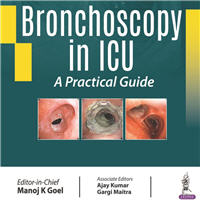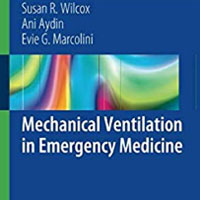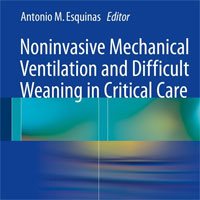Tag: mechanical ventilation
Heat Shock Protein 27 in COVID-19 and non-COVID ARDS Pathogenesis
Acute respiratory distress syndrome (ARDS) is a common cause of hypoxemic respiratory failure in intensive care units that has increased dramatically as a result of the COVID-19 pandemic. In both COVID-19 and non-COVID... read more
Efficacy of High-Flow Nasal Cannula Oxygen Therapy in Patients with AHRF
This study suggests that high-flow nasal cannula (HFNC) therapy in general respiratory wards may be a potential rescue therapy for patients with respiratory failure. Electrical impedance tomography (EIT) potentially monitors... read more
Scheduled Intravenous Opioids
Maintaining comfort and analgesia is fundamental to providing adequate care in intensive care unit (ICU) patients. Pain assessment and its control remain the highest priorities and concerns among survivors of critical illness... read more
Effect of Mechanical Ventilation Under Intubation on Respiratory Tract Change of Bacterial Count
Mechanical ventilation under intubation may cause dysregulation of lower respiratory microbiota in rats. The most common 'second strike' in mechanically ventilated patients is a pulmonary infection caused by the ease with... read more
Convalescent Plasma Cuts Death by 10% in COVID Patients on Mechanical Ventilation
A randomized clinical trial in Belgium finds that convalescent plasma reduces death rates by about 10% in COVID-19 patients requiring invasive mechanical ventilation. University of Liege researchers led the open-label... read more
Haloperidol and Delirium: What is Next?
Haloperidol is, by far, the best-studied antipsychotic in ICU, appears to be safe in the dosing range used in these two trials and is easy to administer and titrate. For these reasons, if a clinician chooses to pharmacologically... read more
Enteral Citrulline Supplementation vs. Placebo in Mechanically Ventilated Patients
Among mechanically ventilated ICU patients without sepsis or septic shock, enteral L-citrulline administration did not result in a significant difference in SOFA score on day 7 compared to placebo. Of 120 randomized patients... read more
Delirium in Critically Ill Patients – Haloperidol Treatment
Haloperidol may reduce mortality and likely result in little to no change in the occurrence of SAEs/SARs compared with placebo in critically ill patients with delirium. However, the results were not statistically significant... read more
Ferroptosis and Pyroptosis Signatures in Critical COVID-19 Patients
Critical COVID-19 patients admitted to the intensive care unit (ICU) frequently suffer from severe multiple organ dysfunction with underlying widespread cell death. Ferroptosis and pyroptosis are two detrimental forms... read more
COVID-19 Critical and Intensive Care Medicine Essentials
This book provides healthcare professionals in Critical Care setting an easy consultation guide to fight against COVID-19. The book is divided into sections: Fundamentals of COVID-19, Pneumological critical care, Neurological... read more

Cluster of Carbapenemase-Producing Carbapenem-Resistant Pseudomonas Aeruginosa Among ICU Patients
Treatment of carbapenemase-producing carbapenem-resistant Pseudomonas aeruginosa (CP-CRPA) infections is challenging because of antibiotic resistance. CP-CRPA infections are highly transmissible in health care settings because... read more
1-year Survival Rate of COVID-19 Infected Patients with ARDS Based on Ventilator Types
The study revealed that the utilization of non-ICU sophisticated ventilators was linked to a higher mortality rate when compared to standard ICU ventilators in COVID-19 patients with ARDS. However, given the shortage and... read more
Elevation of D-dimer Levels Associated with Early Need for Mechanical Ventilation Support in COVID-19 Patients
Hypoxia and thrombosis are hallmarks of severe COVID-19, and each of them can exaggerate the other, adding to the magnitude of the disease. Our study proposes that D-dimer, commonly used as a marker of thrombosis, can also... read more
Noninvasive Ventilation in Sleep Medicine and Pulmonary Critical Care
This book is an introduction to a comprehensive analysis of recent advances and clinical research in noninvasive mechanical ventilation (NIV) in Pulmonary, Critical Care, and Sleep Medicine. The objective of the book is to... read more

Oxygen Support Needs in Children with RSV vs. COVID-19
Children with respiratory syncytial virus (RSV) had a higher risk of pneumonia, bronchiolitis, and a hospital stay of more than 4 days vs children with COVID-19 or influenza. Investigators compared demographic and clinical... read more
Bronchoscopy in ICU: A Practical Guide
This practical guide focuses on Bronchoscopy in ICU. Bronchoscopy is one of the most commonly performed medical procedures, but is limited to the practice of a handful chest physicians and surgeons. The field of bronchoscopy... read more

Why We Can Thank a Polio Emergency for the Birth of Intensive Care
An outbreak of polio in 1950s Denmark led one hospital to pioneer mechanical ventilation, constant monitoring of vital signs and other innovations that are saving lives to this day. The COVID-19 pandemic has brought home... read more
The Autumn Ghost: How the Battle Against a Polio Epidemic Revolutionized Modern Medical Care
"The Autumn Ghost" is a suspenseful and authoritative account that explores how the battle against a polio epidemic in the mid-20th century led to a revolution in medical care. Dr. Hannah Wunsch focuses on the autumn... read more

Comparison of ETA and BALF mNGS in Severe Pneumonia
Our study showed that some differences in the microbiological diagnosis via endotracheal aspirate (ETA) mNGS and bronchoalveolar lavage fluid (BALF) metagenomic next-generation sequencing (mNGS) appear to exist. Clinicians... read more
Mechanical Ventilation in Emergency Medicine
This book discusses mechanical ventilation in emergency settings, covering the management of patients from the time of intubation until transfer to the ICU. It provides an introduction to key concepts of physiology pertinent... read more

Ciprofol Sedation Efficacy and Safety in Mechanical Ventilated ICU Patients
Ciprofol was well tolerated, with a noninferior sedation profile to propofol in Chinese ICU patients undergoing MV for a period of 6–24 hours. Of the 135 patients enrolled, 129 completed the study. The primary endpoint-sedation... read more
Noninvasive Mechanical Ventilation and Difficult Weaning in Critical Care
This book establishes the indications for the use of NIV in the context of weaning from invasive mechanical ventilation. It provides a comprehensive overview of key topics relevant for correct practical application, including... read more










